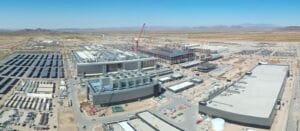Arizona’s economy should pick up in 2015, with expected GDP growth of 3.5 percent, just ahead of the national average and an improvement from the expected 2.5 percent in 2014, according to the bi-annual U.S. State Monitor Report from BMO Economics. Steady population growth and job growth in the high-tech market will also help lead the state’s economic acceleration.
Arizona is again outperforming when it comes to job-growth. Nonfarm payrolls rose 2.5 percent year over year in the fourth quarter. The service sector, led by professional and business services, education, health and tourism, has been responsible for the gains.
Robert Kavcic, Senior Economist, BMO Capital Markets, noted that better momentum could be on the horizon for manufacturing and construction employment. The unemployment rate continues its negative trend, 6.7 percent in December compared to 7.6 percent a year earlier. On the flip side, there is an underlying softness in the labor market as evidenced by average weekly earnings which were down 2.8 percent year over year in the fourth quarter.
”We continue to see increased activity in several sectors, including healthcare, trade and distribution,” said Tim Bruckner, Managing Director, Commercial Banking, Arizona, BMO Harris Bank. “We also know that the majority of Arizona businesses are planning to invest. We’re here to help support business owners as they lead Arizona’s economic recovery.”
The housing headwinds experienced in 2014 appear to be fading slightly with a decrease in rates and mortgage lending conditions somewhat softening. The S&P Case-Schiller Index reported that Phoenix prices are up year-over-year by 2 percent, but that is still a giant downward shift from the 20 percent-plus growth experienced early in the recovery. On the positive side, the vacancy rate is now back down to match the fifty-state average.
Stronger population growth is helping to drive an improved economy, which is steady at a 1.3 percent year-over-year clip. Overall interstate migration remains depressed, somewhat due to the impact the housing market’s decline has had on mobility.
“Population inflows for Arizona, while still positive, would be stronger were it not for the decline in the housing market,” said Mr. Kavcic.
To view a full copy of the report, visit www.bmocm.com/economics.




